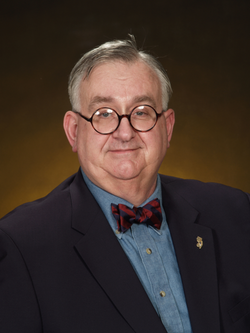My friends, I would like to share some great news with you. On Wednesday September 23, 2009 your Emergency Response Safety Institute (ERSI) entered the world of electronic inter-active education. It was my privilege to be a part of an educational Webinar on Firehouse.com hosted by my friend Peter Matthews. Jack Sullivan, the ERSI Director of Training, conducted a training session entitled "Protecting Firefighter's Lives Along the Double-Yellow Line."
The 90-minute session covered a wide range of information and recommendations about the hazards to emergency personnel while operating on the highways of our nation. Some of the topics which Jack covered were:
- Hazards which lead to congestion
- Problems which occur because of congestion
- Clearance Time
- Secondary Events
- Response Phases Traffic incident
- Mitigation issues
- Highway blocking and clearance issues
It was noted that many of our problems out on the highway come from secondary incidents which occur because of the primary motor vehicle incident. Jack also stressed the need to include the towing and recovery industry people in our training and preplanning sessions for highway emergencies.
Jack continually stressed the need to train and equip all of our operational personnel for their roles during highway emergency incidents. He also made a great many of his points by using a number of actual incidents. These lessons learned, while quite grim in nature, were extremely important to the message he was sending.
Jack went over a number of statistical sets which emphasized the problems which you and I are facing while we operate on the highways within our operational areas. Most of the deaths to firefighters who were operating on the highways involved struck by while directing traffic.
One of the areas which Jack stressed involved having operational rules and guidelines for conducting operations on the roadways of your districts. This involves placement of apparatus, cones and signs. This was followed up with a discussion of the importance of training your personnel.
Jack stressed the importance of developing Traffic Incident Management committees at the local level. He stated that this is the best way to handle the potential for potential operational problems. The creation of plans and procedures will go a long way toward developing positive relationships among the people who will be working at the emergency incident scenes.
One way for you to conduct a positive training experience involves the use of table-top exercises. This is one of the ways which will allow you to develop work zone management techniques with having to go out on to the actual highways in your community. It allows you to create a non-invasive environment to bring personnel from many different agencies together to build a better and more effective community-wide program. Use the tabletops to reinforce both positive and negative interactions.
Some of the clues which Jack covered involved:
- Traffic control devices such as cones, flares, and signs
- All units on same side of road
- Wheels turn away from accident
- Block EMS loading area
- Exit apparatus cab on side away from traffic
For those of you who were unable to be with us, Firehouse.com will have the program archived for your use. Let me urge you to go to that site and view the program. Respondersafety.com and the ERSI will be working to increase our visibility within the world of on-line training. We will be moving into the world of on-line, web-based training to you out there in the operational world.
Jack noted that it was critical for all parts of the community develop a cooperative agreement which specifies the duties, roles, and responsibilities on the agencies which work together in your community.
- Communication
- Collaborate/Coordinate
- Cooperate
In order to focus our efforts, the National Unified Goal (NUG) for highway safety was developed by a wide variety of interested parties to allow us to come together in a consistent manner. The components of the NUG are:
- Safety of responders
- Safe-Quick clearance of the highway
- Prompt, reliable inter-operable communications for all agencies
There are many parts to the highway safety effort. We here at the ERSI and Respondersafety.com will do all that we can to provide you with educational support in this critical area. We would urge you to make a commitment to join with us to make things safer on the highways of your response district.


